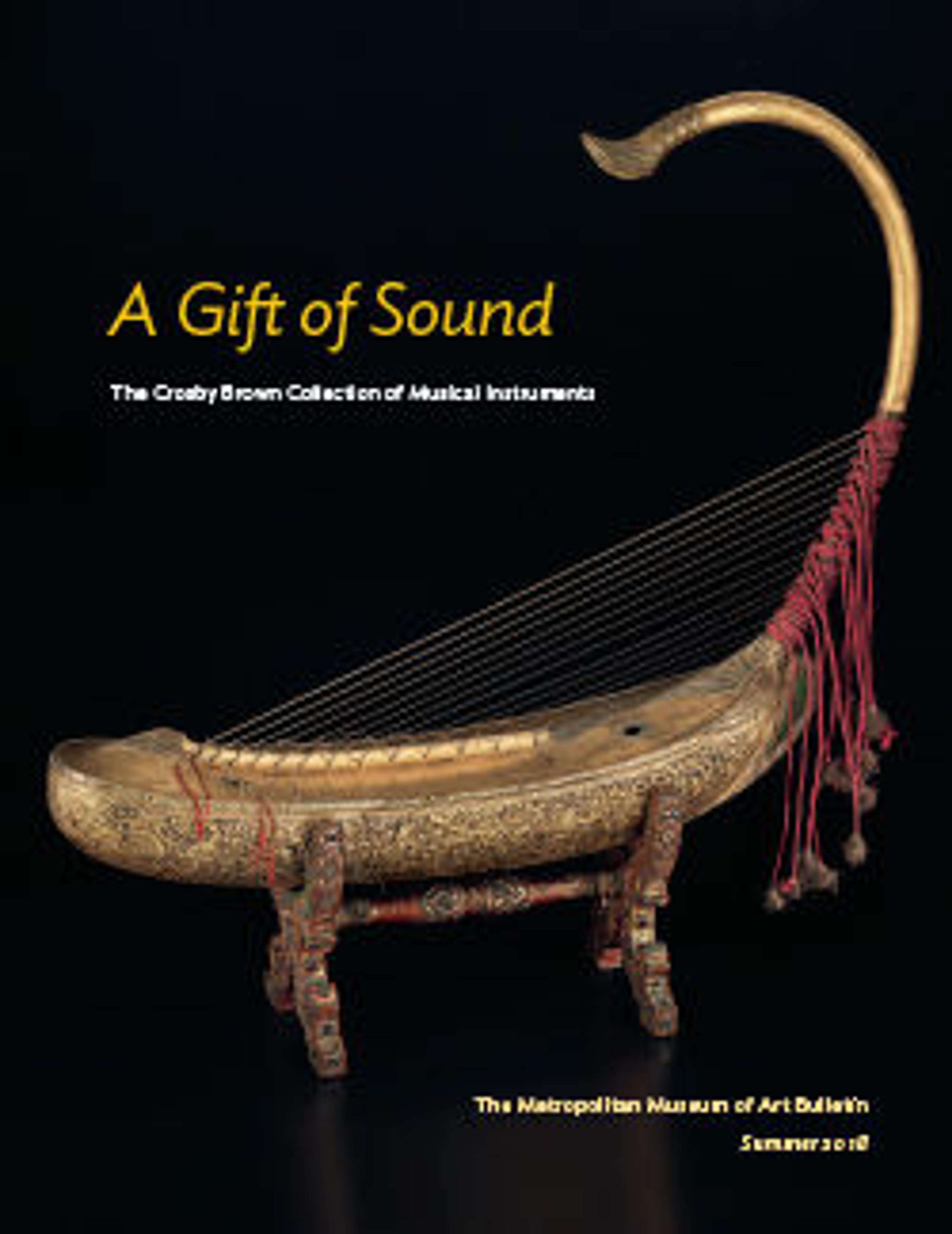Grand Piano
This extraordinarily rare piano from about 1790 has a pedal board with eighteen notes that are played like pedals on an organ. Pedal stringed-keyboard instruments were not uncommon in the eighteenth century. Johann Sebastian Bach is known to have owned a pedal harpsichord and Wolfgang Amadeus Mozart's piano by Anton Walter originally had a pedal mechanism. Mozart's D-minor piano concerto, K. 466, requires the use of a pedal mechanism as it cannot be performed with the range of the manual alone.
This example is attributed to Johann Schmidt of Salzburg, a friend of the Mozart family, whom Leopold Mozart (Wolfgang's father) helped to secure the job of court organ and instrument maker in Salzburg. Indeed, cleaning done in the 1980s revealed the initials of Wolfgang Mozart scratched inside long ago. It is possible that Mozart played this piano in Salzburg.
Technical description: Cherry and cherry veneer case, panel and frame lid; pedal mechanism enclosed with vertical enclosure serving as front support in place of front legs, hinged lid to cover pedals; oak pinblock veneered to match soundboard, turned legs; compass: manual FF-f3 (61 keys), pedal EE/CC-A (18 pedals), black-stained wood naturals, bone-covered accidentals, leather covered pedals; unpierced tuning pins, double-strung throughout, lowest 6 pairs copper-wound over brass (modern strings); manual action: German with escapement and no check; pedal action: Anglo-German, operating a separate row of 24 hammers that strike the lowest manual notes plus 5 additional notes below the manual compass; pedals octave-coupled; damper jacks rise in rack over strings, dowel-shaped lower portion of damper jacks pass through leather loops and are lifted by leather-lined wood blocks glued to key levers; lowest 24 dampers are lifted independently of manual key action when pedals are operated; leather pads on the backfalls (which are also involved in coupling the pedals to their respective hammers) engage an additional projection on the dampers; lowest 19 key levers are cut away to permit projections to pass through to the backfalls; 2 knee levers: dampers operated by either knee, second lever, controlling "piano" stop (leather pads moved between hammers and strings) operated by right knee, handstop engages "bassoon" stop (loop of heavy paper or parchment) buzzing over lowest 26 pairs of strings.
This example is attributed to Johann Schmidt of Salzburg, a friend of the Mozart family, whom Leopold Mozart (Wolfgang's father) helped to secure the job of court organ and instrument maker in Salzburg. Indeed, cleaning done in the 1980s revealed the initials of Wolfgang Mozart scratched inside long ago. It is possible that Mozart played this piano in Salzburg.
Technical description: Cherry and cherry veneer case, panel and frame lid; pedal mechanism enclosed with vertical enclosure serving as front support in place of front legs, hinged lid to cover pedals; oak pinblock veneered to match soundboard, turned legs; compass: manual FF-f3 (61 keys), pedal EE/CC-A (18 pedals), black-stained wood naturals, bone-covered accidentals, leather covered pedals; unpierced tuning pins, double-strung throughout, lowest 6 pairs copper-wound over brass (modern strings); manual action: German with escapement and no check; pedal action: Anglo-German, operating a separate row of 24 hammers that strike the lowest manual notes plus 5 additional notes below the manual compass; pedals octave-coupled; damper jacks rise in rack over strings, dowel-shaped lower portion of damper jacks pass through leather loops and are lifted by leather-lined wood blocks glued to key levers; lowest 24 dampers are lifted independently of manual key action when pedals are operated; leather pads on the backfalls (which are also involved in coupling the pedals to their respective hammers) engage an additional projection on the dampers; lowest 19 key levers are cut away to permit projections to pass through to the backfalls; 2 knee levers: dampers operated by either knee, second lever, controlling "piano" stop (leather pads moved between hammers and strings) operated by right knee, handstop engages "bassoon" stop (loop of heavy paper or parchment) buzzing over lowest 26 pairs of strings.
Artwork Details
- Title: Grand Piano
- Maker: Attributed to Johann Schmidt (Austrian 1757–1804)
- Date: ca. 1790–95
- Geography: Salzburg, Austria
- Culture: Austrian (Salzburg)
- Medium: Various materials
- Dimensions: 214cm x 102cm x 84cm
- Classification: Chordophone-Zither-struck-piano
- Credit Line: The Crosby Brown Collection of Musical Instruments, 1889
- Object Number: 89.4.3182
- Curatorial Department: Musical Instruments
More Artwork
Research Resources
The Met provides unparalleled resources for research and welcomes an international community of students and scholars. The Met's Open Access API is where creators and researchers can connect to the The Met collection. Open Access data and public domain images are available for unrestricted commercial and noncommercial use without permission or fee.
To request images under copyright and other restrictions, please use this Image Request form.
Feedback
We continue to research and examine historical and cultural context for objects in The Met collection. If you have comments or questions about this object record, please contact us using the form below. The Museum looks forward to receiving your comments.
